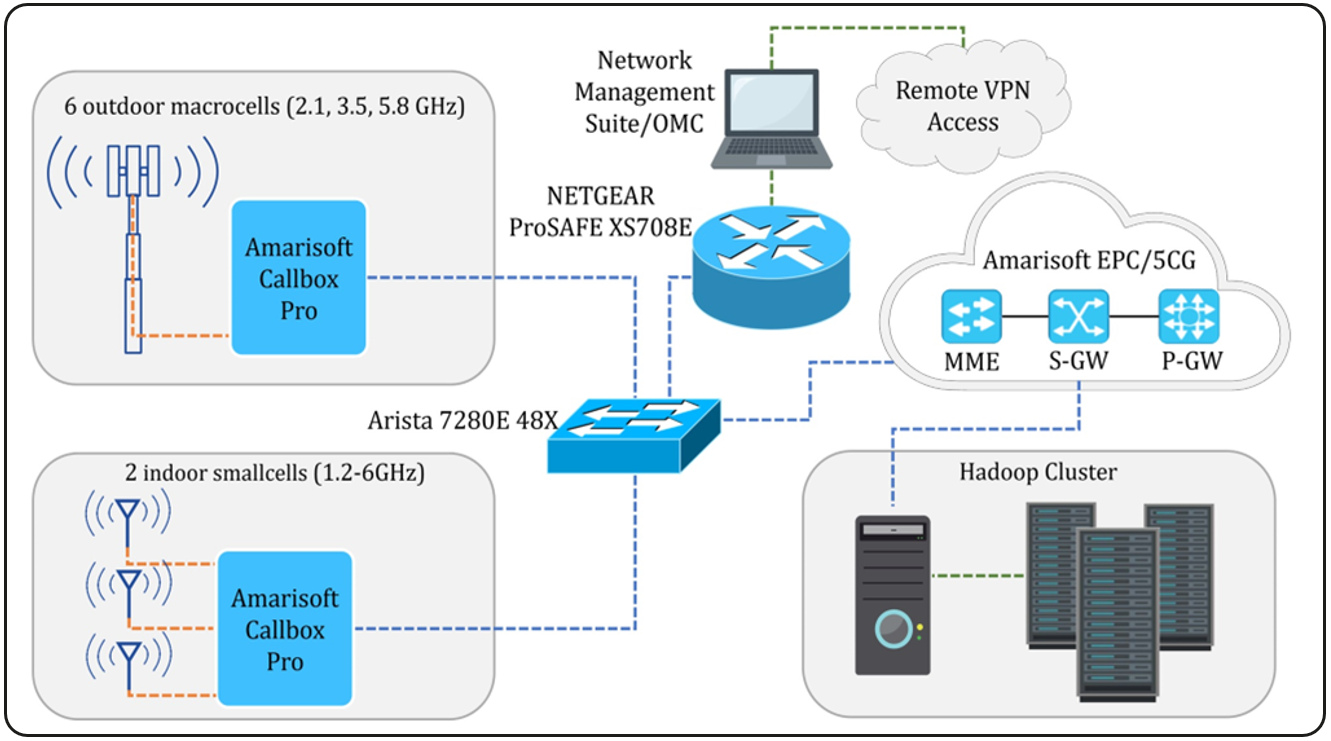TurboRAN Layout
What is TurboRAN?
TurboRAN is a state-of-the-art 5G&B network testbed that provides a comprehensive platform for early real-world use case deployment. Unlike other 5G testbeds that focus solely on the PHY and MAC layers, TurboRAN is specifically designed to support system-level research on the next-generation mobile network.
Managed by the AI4Networks Research Center, TurboRAN is a university-wide mobile cellular network located at the University of Oklahoma, Tulsa campus. Covering a vast 300,000 m2 area, the testbed features a combined indoor and outdoor cell deployment that includes 17 distinct cell sectors with a base station density of approximately 57 BS/km2. This is in line with the anticipated 5G BS density of 40-50 BS/km2. The schematic of the TurboRAN network deployment is shown in Figure. 1.

The outdoor cell deployment consists of 6 microcells, each covering a portion of the campus outdoor area, which includes typical suburban elements such as roads, pedestrian areas, lawns, trees, and parking lots. TurboRAN cells operate in the unlicensed bands below 6 GHz, including ISM - 2450.0 ± 50 MHz, and ISM - 5.8 ± 0.075 GHz. Because these bands are close to the cellular bands of 2500 MHz, and 5G bands in 5 GHz, the results generated by TurboRAN can be easily applied to commercial bands.
In the near future, TurboRAN will expand its operation to include the Citizens Broadband Radio Service (CBRS) 3.5 GHz band, pending the acquisition of an experimental license. The testbed also plans to operate in the mmWave band, further extending its capabilities.
Each cell in TurboRAN is equipped with 4 antenna elements that form an array for MIMO. The radii of the cells are adjustable through adaptation of the transmit power and antenna tilts. Precise mobility control is achievable through the use of unmanned ground vehicles (UGVs) and UAVs for indoor and outdoor mobility, respectively.
TurboRAN features commercial and open source 5G Core (5GCs)/EPCs, making it a unique testbed. Additionally, it incorporates a Hadoop cluster for big data processing. The cluster is connected to 5GCs and EPCs, as well as access points (APs), allowing for machine-learning algorithms to be applied for zero-touch automation and proactive self-organizing network (P-SON) functionalities. High-capacity optical fiber cables connect the cells to the 5GCs/EPCs and large data processing cluster, enabling data rates of up to 10 Gbps. A simplified architecture of TurboRAN is shown in Figure. 2.

TurboRAN is a unique and valuable resource for researchers and engineers seeking to test and evaluate 5G&B technologies, with its advanced facilities and comprehensive capabilities enabling a broad range of real-world use cases.